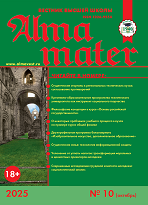УДК 159.92+316.6
https://doi.org/10.20339/AM.03-22.016
В.А. Ситаров,
д-р пед. наук, проф. департамента педагогики
Института педагогики и психологии образования
Московский городской педагогический университет
e-mail: sitarov@mail.ru
В.Г. Маралов,
д-р психол. наук, проф. кафедры психологии
Череповецкий государственный университет
e-mail: vgmaralov@yandex.ru
Статья посвящена проблеме исследования «гандианской» (ненасильственной) личности в современной психологии. На основе анализа психологического конструкта, предложенного М.Ганди, — «сатьяграха», «ахи́мса» и «тапасья» — осуществлен обзор работ, посвященных изучению психологических характеристик ненасильственной личности. Выявлен и описан основной механизм функционирования ненасильственной личности — способность к интеграции противоположностей, порождаемых противоречиями, возникающими в процессах
взаимодействия человека с самим собой, с другими людьми, природой и окружающим миром.
Ключевые слова: ненасилие, ненасильственная личность, ненасильственное отношение, механизмы интеграции противоположностей
Литература
- Антология ненасилия. М.; Бостон,1991. 256 с.
- Дерябо С.Д., Ясвин В.А. Экологическая педагогика и психология. Ростов-на-Дону: Феникс, 1996. 480 с.
- Маралов В.Г. Приобретение или избавление: проблема выбора студентами стратегий самосовершенствования // Интеграция образования. 2017. Т. 21. № 3. С. 477–488. DOI: 10.15507/1991-9468.088.021.201703.477-488
- Мичурин И.В. Итоги шестидесятилетних трудов по выведению новых сортов плодовых растений. Изд. 3-е, М., 1934.
- Почебут Л.Г., Безносов Д.С. Ассертивность и толерантность в межкультурном взаимодействии // Социальная психология и общество. 2017. Т. 8. № 3. С. 8—19. DOI: 10.17759/sps.2017080302
- Роджерс К. Эмпатия // Психология мотивации и эмоций / под ред. Ю.Б. Гиппенрейтер, М.В. Фаликман. М.: ЧеРо, 2002. С. 428–430.
- Семлен Ж. Выход из насилия // Глобальные проблемы и общечеловеческие ценности. М.: Прогресс, 1990. С. 76–85 URL: https://my.mail.ru/community/nichiren-shu/31CA2A43AFD252D3.html
- Толстой Л.Н. Ассирийский царь Асархадон // Собрание сочинений в 22 т. М.: Художественная литература, 1983. Т. 14. С. 17–21.
- Швейцер А. Благоговение перед жизнью. М.: Прогресс, 1992.
- Acarón, T. Movement decision-making in violence prevention and peace practices. Journal of Peace Education. 2018. Vol. 15(2). P. 191–215. DOI: 10.1080/17400201.2018.1463913
- Ashraf, R., Fatima, I. Role of personality and spirituality in nonviolent behavior in young adults. Journal of Behavioural Sciences. 2014. Vol. 24(1). P. 57–70.
- Brenes, A.C. An integral model of peace education. In: Wenden, A.L. (ed.) Educating for a culture of social and ecological peace. Albany: State University of New York Press, 2004. P. 77–98.
- Brown, S., Reimer, K.S., Dueck, A.C., Gorsuch, R., Strong, R., & Sidesinger, T. A particular peace: Psychometric properties of the Just Peacemaking Inventory. Peace and Conflict: Journal of Peace Psychology. 2008. Vol. 14(1). P. 75–92. DOI: https://doi.org/10.1080/10781910701839908
- Gandhi, M.K. My Non-violence. Compiled By: Sailesh Kumar Bandopadhyaya. Printed & Published by: Jitendra T Desai Navajivan Publishing House. Ahmedabad, 1960. 408 p.
- Gregg, R.B. The Power of Nonviolence. Nyack, NY: Fellowship Publications, 1959. 192 p.
- Hasan, Q., Khan, S.R. Dimension of Gandian (nonviolent) personality. Journal of Psychological Researches. 1983. Vol. 27(2). P. 100–106. URL: https://psycnet.apa.org/record/1985-06665-001
- Jackson, J., Choi, V.K., Gelfand, M.J. Revenge: A Multilevel Review and Synthesis. Annual Review of Psychology, 2019. Vol. 70. P. 319–345. URL: https://ssrn.com/abstract=3318213
- Kool, V.K., Sen, M. The nonviolence test. In: D.M. Pestonjee (ed.), Second handbook of psychological and social instruments. Ahemdabad: Indian Institute of Management, 1984. P. 48–54.
- Kool, V.K. Applications of Gandhian concepts in psychology and allied disciplines. Indian journal of psychiatry. 2013. 55(Suppl 2). P. 235–238. DOI: https://doi.org/10.4103/0019-5545.105541
- Kool, V.K., Agrawal, R. Gandhi and the Psychology of Nonviolence, Vol. 1: Scientific Roots and Development. Palgrave Macmillan, Cham. 2020. 335 p. DOI: https://doi.org/10.1007/978-3-030-56865-8
- Kool, V.K., Agrawal, R. Gandhi and the Psychology of Nonviolence, Vol. 2: Applications across Psychological Science. Palgrave Macmillan, Cham. 2020. 333 p. DOI: https://doi.org/10.1007/978-3-030-56989-1
- Macaskill, A. Forgiveness: A Nonviolent Resolution of Interpersonal Conflict. In: Standish, K., Devere, H., Suazo, A., Rafferty, R. (eds.) The Palgrave Handbook of Positive Peace. Palgrave Macmillan, Singapore. 2021. DOI: https://doi.org/10.1007/978-981-15-3877-3_8-1
- Mayton, D.M. Gandhi as peacebuilder: The social psychology of Satyagraha. In: D.J. Christie, R.V. Wagner, D.D.N. Winter (eds.). Peace, conflict, and violence: Peace psychology for the 21st century. Prentice Hall. Pearson Education. 2001. P. 307–313.
- Mayton, D. Nonviolence and Peace Psychology. New York: Springer, 2009. 292 p. DOI: https://doi.org/10.1007/978-0-387-89348-8_3
- Nelson, L. Peaceful Personality: Psychological Dynamics and Core Factors. In: Sims, G., Nelson, L., Puopolo, M. (eds.). Personal Peacefulness. Peace Psychology Book Series. Vol. 20. Springer, New York, NY. 2014. DOI: https://doi.org/10.1007/978-1-4614-9366-2_4
- Righetti, F., Sakaluk, J.K., Faure, R., Impett, E.A. The link between sacrifice and relational and personal well-being: A meta-analysis. Psychological Bulletin. 2020. Vol. 146(10). P. 900–921. DOI: https://doi.org/10.1037/bul0000297
- Pontara, G. The nonviolent personality. English translation. Copyright 2011 by Maria Keet.
- Copyright Italian original (first edition, 1996): Edizioni Gruppo Abele, Torino. URL: http://citeseerx.ist.psu.edu/viewdoc/download?doi=10.1.1.440.7677&rep=rep1&type=pdf
- Rosenberg, M.B. Nonviolent communication: a language of life. 2015. Encinitas, CA: PuddleDancer Press. 280 p.
- Roy, S. Enhancing Nonviolent Footprints for the Culture of Peace and Nonviolence. International Journal of Peace, Education and Development. 2018. Vol. (2). P. 57–62. DOI: 10.30954/2454–9525.02.2018.2
- Sarkar, A., Garg, N. A multilevel model exploring the relationships between individual spirituality, spiritual climate, and nonviolent work behavior. Conflict Resolution Quarterly. 2021. Vol. 38(3). P. 209–229. DOI: https://doi.org/10.1002/crq.21298
- Tutu, D. No future without forgiveness: A personal overview of South Africa’s Truth and Reconciliation Commission. New York, 1999. 256 p.











.png)






